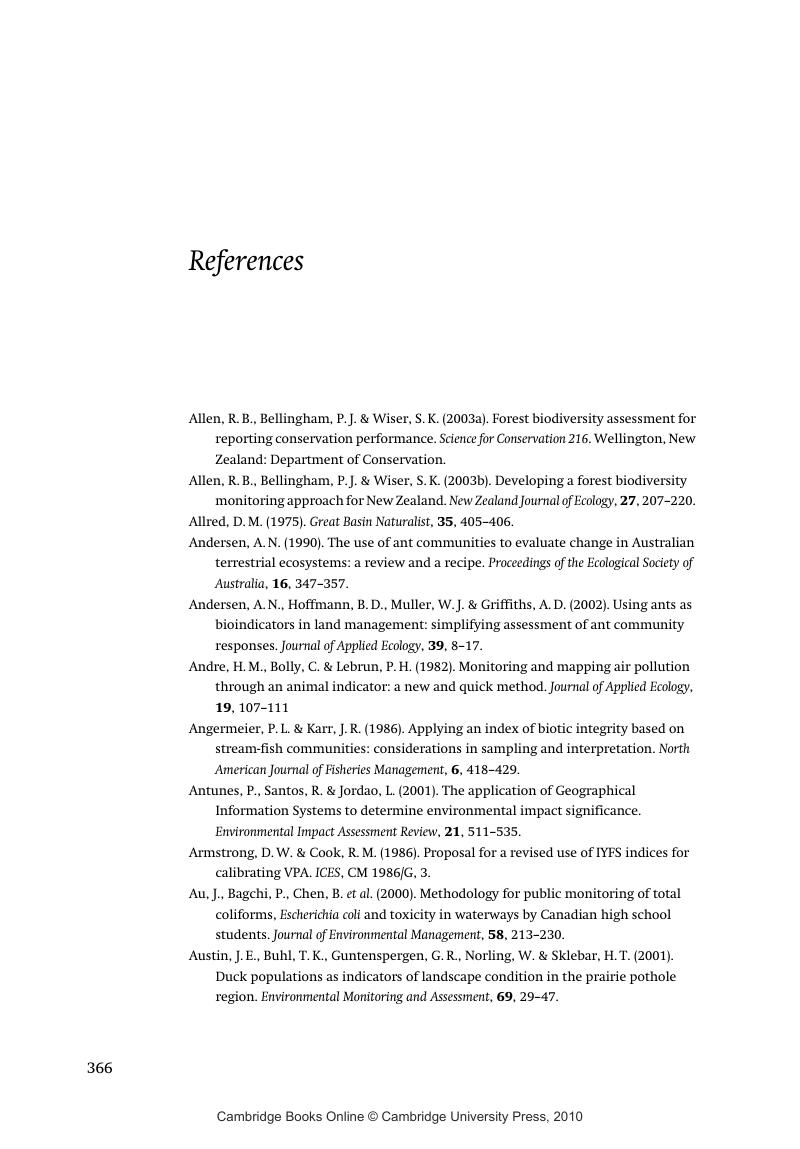Book contents
- Frontmatter
- Contents
- Foreword
- Preface
- Acknowledgements
- Glossary of acronyms and abbreviations
- 1 Ecological monitoring
- 2 Environmental monitoring programmes and organizations
- 3 State of the environment reporting and ecological monitoring
- 4 Biological and spatial scales in ecological monitoring
- 5 Biological indicators and indices
- 6 Diversity and similarity indices
- 7 Planning and designing ecological monitoring
- 8 Community-based ecological monitoring
- 9 Ecological monitoring of species and biological communities
- 10 Ecological monitoring and environmental impact assessments
- Appendix: The 1992 Convention on Biological Diversity
- References
- Index
- References
References
Published online by Cambridge University Press: 18 December 2009
- Frontmatter
- Contents
- Foreword
- Preface
- Acknowledgements
- Glossary of acronyms and abbreviations
- 1 Ecological monitoring
- 2 Environmental monitoring programmes and organizations
- 3 State of the environment reporting and ecological monitoring
- 4 Biological and spatial scales in ecological monitoring
- 5 Biological indicators and indices
- 6 Diversity and similarity indices
- 7 Planning and designing ecological monitoring
- 8 Community-based ecological monitoring
- 9 Ecological monitoring of species and biological communities
- 10 Ecological monitoring and environmental impact assessments
- Appendix: The 1992 Convention on Biological Diversity
- References
- Index
- References
Summary

- Type
- Chapter
- Information
- Monitoring Ecological Change , pp. 366 - 387Publisher: Cambridge University PressPrint publication year: 2005



